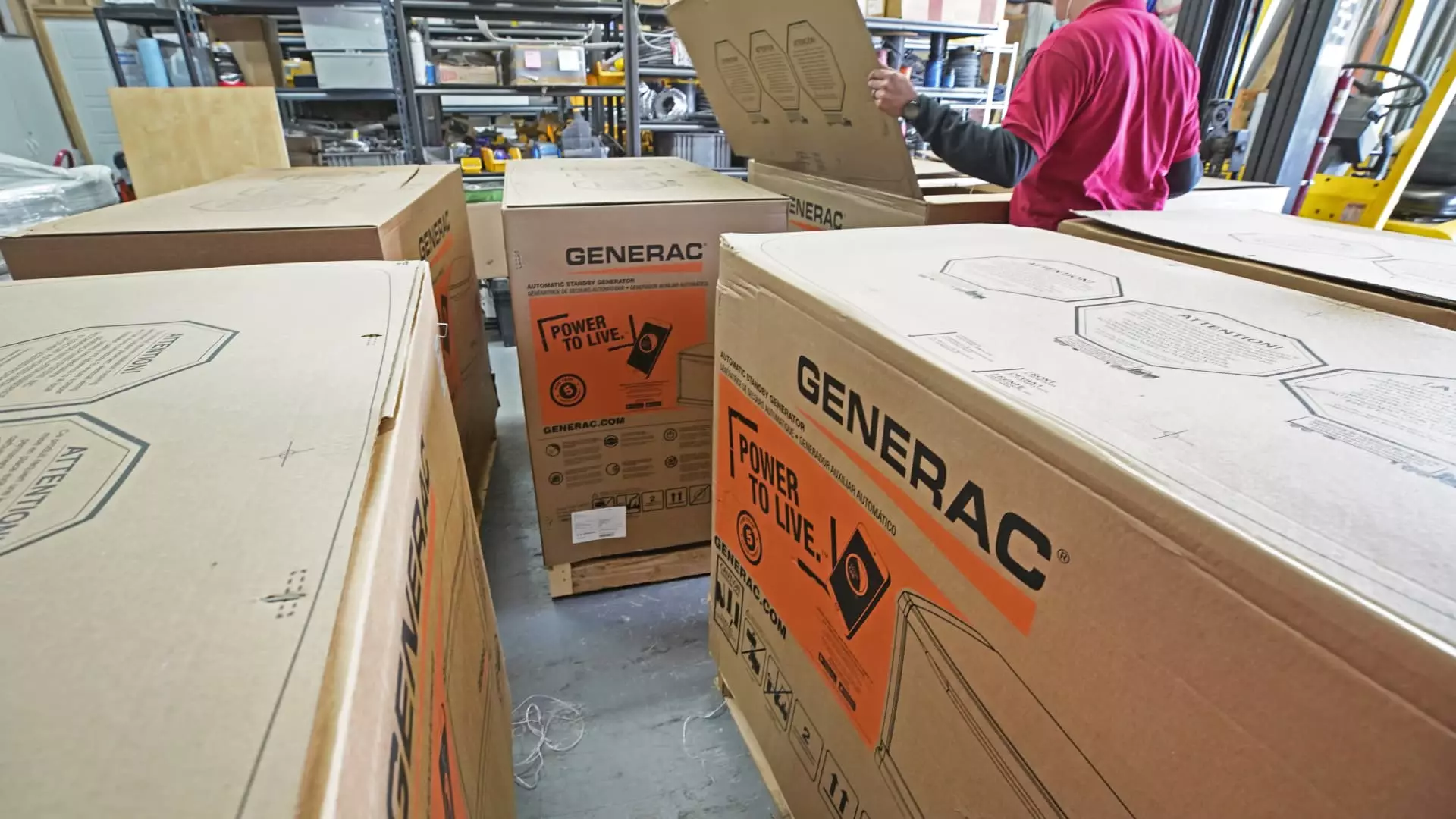As the sweltering heat of summer takes hold and the stormy whisper of hurricane season descends upon the nation, Generac has emerged as an unexpected stock market darling. The backup-generator company has been on a remarkable run, witnessing nearly a 12% jump in just a week, marking its best performance since late 2024. This surge isn’t just good fortune; it’s a reflection of dire circumstances gripping the American landscape, where extreme weather conditions and a crumbling power infrastructure are becoming the new normal. Investors are not merely looking at a product; they are betting on a necessity in a world increasingly fraught with unpredictability.
A Hot Summer of Power Outages
Eastern and central parts of the United States have been enveloped by oppressive heat, triggering widespread power outages across states like New York and New Jersey. Approximately 130 million people are currently under extreme heat advisories, a staggering figure that highlights the furious intensity of this heat wave. With climate change amplifying these events, the urgency to seek effective solutions becomes even more pronounced. It’s no longer just hot summers; it’s an existential crisis for our power grid, which is already showings signs of severe stress and aging.
The Storms Ahead: A Precarious Forecast
The National Oceanic and Atmospheric Administration (NOAA) has projected an unusually active hurricane season, with estimates ranging from 13 to 19 named storms and a chilling expectation of 3 to 5 major hurricanes. These forecasts are alarming, especially as they coincide with increasingly unpredictable climate behavior. Accordingly, Generac’s soaring shares aren’t merely a reflection of good management; they symbolize a market deeply attuned to the brewing storms ahead. Investors are acutely aware that the demand for backup generators is likely to skyrocket in the wake of both heat-related outages and potential hurricane devastation.
Behind the Infrastructure Crisis
The alarming predictions regarding power outages—suggesting a potential 50% increase in risk due to climate change—underscore a broader infrastructure crisis. The statistics reveal a power grid that is not just aging; it’s faltering under the strain of modern demands. The comments from Generac’s CEO, Aaron Jagdfeld, resonate deeply: “This has become a massively critical discussion point.” The fragility of our electrical infrastructure coupled with a growing population reliant on consistent power can only lead to trouble. As temperatures rise and storms increase, our grid’s shortcomings become glaringly evident.
The Players in the Power Market
As the demand for reliable energy sources grows, companies like Trane Technologies, which specializes in cooling systems, and utility stocks such as Constellation Energy are poised to benefit. Bank of America anticipates elevated electrical loads in the upcoming years, a prospect that is both exciting and troubling. The irony here is palpable: while demand for energy solutions rises, so too does the risk for utilities to underperform unless they adapt swiftly to evolving circumstances. It’s a game of survival for businesses in this space, yet opportunities for robust growth exist if they can navigate the stormy waters ahead.
Selectivity in Investments: A Calculated Risk
In a year where utility stocks have outperformed the S&P 500, a cautious approach is warranted, as articulated by analysts at Bank of America. They propose a focus on “laggards” in the sector—companies that have yet to capture market momentum but possess catalysts capable of fueling growth. The likes of Sempra and Northwestern Energy may seem like uninspiring choices on the surface, yet they hold the potential for significant upward movement as society grapples with an evolving climate and an ever-pressing need for organizational reform in energy production and distribution.
The confluence of rising temperatures, increased storm activity, and an outdated power grid creates an environment ripe with both peril and possibility. As these factors converge, will investors recognize not only the risks but also the fundamentally transformative opportunities that lie ahead in the power market landscape? It’s a question that requires urgent consideration as we brace for the storms that are sure to come.

